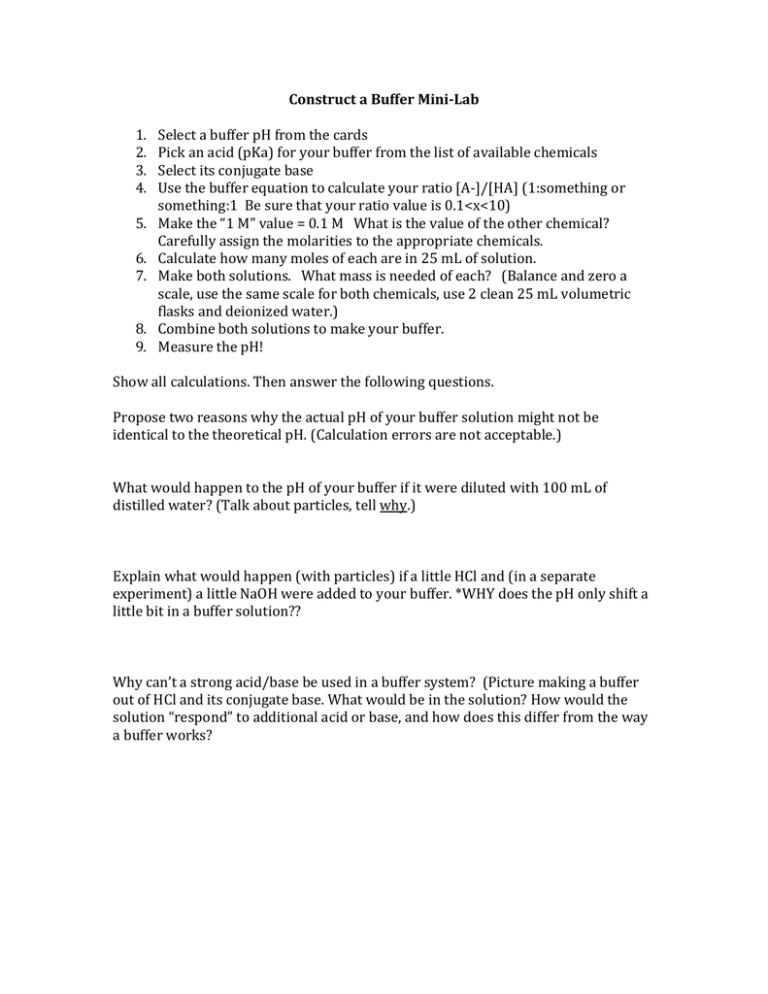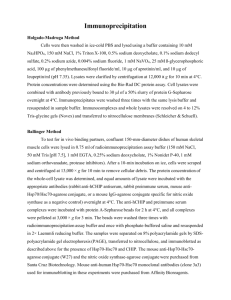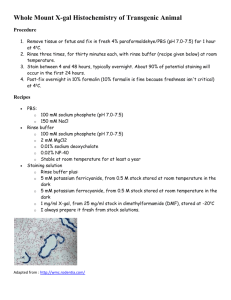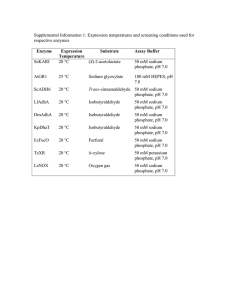Construct a Buffer Mini Lab
advertisement

Construct a Buffer Mini-Lab 1. 2. 3. 4. 5. 6. 7. 8. 9. Select a buffer pH from the cards Pick an acid (pKa) for your buffer from the list of available chemicals Select its conjugate base Use the buffer equation to calculate your ratio [A-]/[HA] (1:something or something:1 Be sure that your ratio value is 0.1<x<10) Make the “1 M” value = 0.1 M What is the value of the other chemical? Carefully assign the molarities to the appropriate chemicals. Calculate how many moles of each are in 25 mL of solution. Make both solutions. What mass is needed of each? (Balance and zero a scale, use the same scale for both chemicals, use 2 clean 25 mL volumetric flasks and deionized water.) Combine both solutions to make your buffer. Measure the pH! Show all calculations. Then answer the following questions. Propose two reasons why the actual pH of your buffer solution might not be identical to the theoretical pH. (Calculation errors are not acceptable.) What would happen to the pH of your buffer if it were diluted with 100 mL of distilled water? (Talk about particles, tell why.) Explain what would happen (with particles) if a little HCl and (in a separate experiment) a little NaOH were added to your buffer. *WHY does the pH only shift a little bit in a buffer solution?? Why can’t a strong acid/base be used in a buffer system? (Picture making a buffer out of HCl and its conjugate base. What would be in the solution? How would the solution “respond” to additional acid or base, and how does this differ from the way a buffer works? Chemicals available for your buffer system: Salt Ka Potassium carbonate --- Potassium hydrogen carbonate (“bicarbonate”) Potassium hydrogen phthalate Sodium acetate Sodium chloride Sodium dihydrogen phosphate (“monobasic”) Sodium hydrogen sulfate (“bisulfate”) Sodium hydrogen sulfite (“bisulfite”) Sodium monohydrogen phosphate (“dibasic”) Sodium phosphate (“tribasic”) Sodium sulfate Sodium sulfite 4.8 x 10-11 ------6.2 x 10-8 1.2 x 10-2 6.2 x 10-8 3.6 x 10-13 -------







